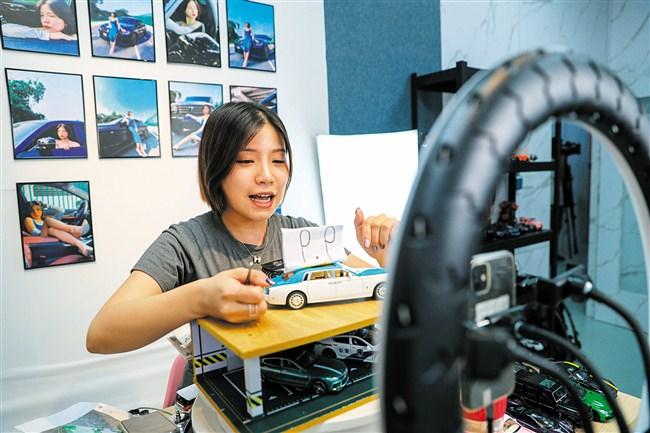Qin Kun | Explorer of space data mining and space -time big data analysis
Author:Scientific Chinese Scichi Time:2022.09.09
In the 21st century, scientific research entered the fourth paradigm: the era of data dense scientific discovery. Data has become an important production factors and national basic strategic resources in the new era. The United States, Russia, France, Japan, and China have launched a large number of satellites and receive a large amount of remote sensing satellite data every day. There is also an omnipotent sensing network data, with the car trajectory data of global navigation positioning, etc., and has accumulated a large amount of space -time big data.
The advent of time and space big data has brought various challenges and opportunities to remote sensing and geographical information innovation. How to extract space -time information from the time and space data of the vast sea of smoke, tap the knowledge of time and space, and serve the field application? Qin Kun has been thinking and exploring.
Over the years, Qin Kun has been committed to research on time and space big data analysis, remote sensing image mining, spatial humanities and social geographical computing. There are many scientific research results with important value.

▲ Qin Kun
Diligent to explore scientific research
"Qinling and Kunlun Mountains are the longest large mountains in the central and eastern parts of my country, and the mountains of China's geography north -south. My name is related to geography. Maybe I am destined to engage in work related to geographic information in my life." After decades in the field of scientific research, Qin Kun said with emotion.
Qin Kun has been thinking about the dream of scientists since he was a child and has a strong interest in scientific research. For decades, he has continued to seek on the road of scientific research, and now he has been fruitful in the direction of time and space big data analysis and mining.
In 1991, Qin Kun was admitted to the Natural Geographic Base Class of Lanzhou University to learn courses such as geology, meteorology, hydrology, soil, geographical information, remote sensing, etc., accumulated comprehensive and solid professional knowledge for subsequent research, and gradually clarified the next specific step specific. Professional direction. At that time, he found that he was more interested in curriculum such as remote sensing and geographical information. Therefore, he chose map studies and remote sensing majors when he was admitted to Nanjing Normal University for a master's degree.
Nanjing Normal University has deep research and strength in the field of map studies and remote sensing. Here, from Professor Ni Shaoxiang, Qin Kunshi was independent of the Jiangsu Natural Science Foundation of China to "use the GIS geographical information system technology to study agricultural land valuation". The project has been completed from Qin Kun from technical route design, data collection and finishing, to system research and development, and project reporting. And he also collaborated with the mentor in the Geographical Journal of Geography, the first paper in the country on GIS technology to support agricultural land valuation.
But Qin Kun was not satisfied with this. After graduating from a master's degree, he chose to enter the School of Information Engineering, Wuhan University of Surveying and Mapping (now the School of Remote Sensing Information Engineering of Wuhan University). Doctorate. As far as he is concerned, it is so fascinating how to explore the scientific issue of regular knowledge from image data.
In the study of doctoral dissertations, Qin Kun first introduced formal concept analysis theory into the field of image data mining, and proposed a set of image data mining methods based on formal concept analysis. He studied the geographical concepts of cultivated land, water body, vegetation, and forest land in the real world, and used the formal language of mathematics for conceptual expression, and extracted these semantic concepts from the image data to achieve image classification and semantic understanding.
He also introduced commercial space theory into the field of image data mining, and proposed a set of multi -grained image data mining frameworks under the guidance of business space theory. Based on these theoretical and methods, Qin Kun designed and developed the first set of domestic remote sensing image data mining RSImageMiner.
After graduating from the PhD, Qin Kun continued to explore on how to achieve the road of scientific research from data to information and knowledge transformation. Under the guidance of Academician Li Deyi, a postdoctoral mentor and artificial intelligence scientist, he began to study uncertain artificial intelligence, from data to information, to uncertainty during knowledge conversion, how to extract semantic concepts from the image data to achieve image images Segmentation and semantic understanding, etc., completed a 170 -page post -doctoral out exit report "New Methods of Uncertainty Image Segmentation", and based on this, successfully approved the first national natural science fund project. The uncertainty image segmentation method "has carried out a series of research on comprehensive consideration of fuzzy and random cloud model image segmentation methods.
Looking back at the course of Qin Kun's road, from interested in scientific research, to entering the field of remote sensing and geographic information science, he has been diligent on the road of scientific research, and has always grown in diligent, rigorous, and pragmatic state. A footprint, walking solidly and calmly, this is the result of his current fruitful results.
Disciplinary integration is innovation
In the exploration of time and space information from time and space data and tap time and space knowledge, how to continuously develop and innovate, explore the laws of activities about nature, society, and people itself? This is a question that Qin Kun has been thinking and diligent.
Just as Academician Li Daren recalled Mr. Wang Zhizhuo's teaching: "The trend of scientific development today is mainly to develop in horizontal cross -intensive development. Who is the cross -disciplinary? Who is active?" Under the guidance of scientists' innovative ideas, Qin Kun opened the road of scientific research exploration of discipline integration. Qin Kun's second National Natural Science Foundation project "Behavior Track Data Data High -Performance Time and Space Close Category and Social Analysis" is the product of the idea of cross -disciplinary intersection and innovation.
Behavioral trajectory data is a record of human activities, which is closely related to sociology. The project conducts systematic research on the big data analysis method of behavior trajectory, taps the hidden behavior mode and activity laws, and analyzes with social factors to explain the social science mechanism of the big data of the behavior trajectory and its activity mode.
Based on this project research, Qin Kun continued to move forward, and in 2019, as the executive chairman of the "Tenth Space Comprehensive Humanities and Social Sciences Forum", under the guidance of Academician Gong Jianya, chairman of the forum, he successfully organized this 300 Multi -person forum meeting. The space, humanities and social geography computing gradually became another important research direction of Qin Kun.
Under the guidance of the intersection of discipline cross -integration, Qin Kun successfully approved the third national natural science fund project in 2021 "Global -level geographical diversified network excavation and association analysis".
This project is a cross -disciplinary cross -disciplinary cross -disciplinary study of geographic information science and social sciences, with distinctive disciplines.
From the global scale, focusing on global issues such as global population movement and international relations, based on news media data, international trade data, global population mobile data, global aviation network data and other multi -source data, build a global -scale geographical diversity network Study and propose the global geographical multi -current network measurement and structural identification, evolutionary analysis and association analysis methods. Based on the theory of space, humanities and social geographic computing, he also applied to the network of geographical diversified flow mining and associated analysis methods to global issues such as international relations, international trade, and population movement. The project not only studies the key issues in the field of geographical information science, "geographical diversified flow network excavation and association analysis methods", but also study global and interdisciplinary research problems such as global population mobile, international relations, and international trade.
Although the project research has just begun, Qin Kun is full of confidence. He plans to innovate in the analysis method of geographical diversified flow, population movement and international relations, and to make a geographical multi -flow analysis, space social network, social geographical computing, etc. Basic contribution.
The interdisciplinary cross -integration is the source of innovation. At the same time, in the spirit of seeking the spirit, Qin Kunfang, who has been thinking about the dream of scientists since childhood, is determined to produce more innovative results on the road of scientific research exploration of remote sensing geographic information science and social science cross -integration.
Carefully teach books to educate people
Teaching and educating people is the job of teachers. Qin Kun has always given undergraduates to the first place in all jobs.
He has long taught the "Geographical Information System Basis" and professional core courses "Space Data Analysis" for undergraduates for undergraduates of Wuhan University for a long time. Open the "Space Humanities Society GIS" to guide and help students in the field of humanities and social sciences master GIS geographical information analysis technology.
Incorporating the scientific research results of national scientific research projects into the class in a timely manner is a major feature of Qin Kun's class, allowing undergraduates to learn and understand the latest academic frontiers while mastering the basic professional knowledge, so as to establish the spirit of scientific research and learning of undergraduates enthusiasm.
With his outstanding performance in the field of teaching, he has won a number of teaching awards such as Wuhan University's "Luojia Anti -Epidemic and Ten Online Teaching Persons", Undergraduate Excellent Teaching Performance Award, Excellent Teaching Materials Special Award, Special Teaching Achievement Award. The affirmation and encouragement of him seriously and educating him.
Peaches and plums, the next from Seikei. As of June 2022, Qin Kun has trained eight doctors and 92 master's degrees of 100 graduate students. Graduates are distributed in academia and enterprises and institutions, becoming the mainstay.
In terms of graduate training, his method is to allow students to go to national scientific research projects. At the same time, they teach according to their aptitude, and choose the corresponding research direction according to the students' interests to cultivate their sense of mission and responsibility.
In Qin Kun's opinion, scientific research needs to be persistent after the direction is selected. There will be many problems in the scientific research process. The more this time, the more you need to stick to it. A firm belief in this career.
After many years of hard work in exchange for insights, Qin Kun hopes to encourage his graduate students: scientific research has dangerous peaks, not afraid of tackling; cross -seeking innovation, finding the result of the result of the results of the country;
- END -
Chenghai District builds a live broadcast new ecology to help the toy industry broaden the market

Toy e -commerce live broadcast siteRecently, Chenghai District launched the e -com...
The new version of the meditation applet is online

Our new version of the meditation applet is online, readers who need it can enter ...